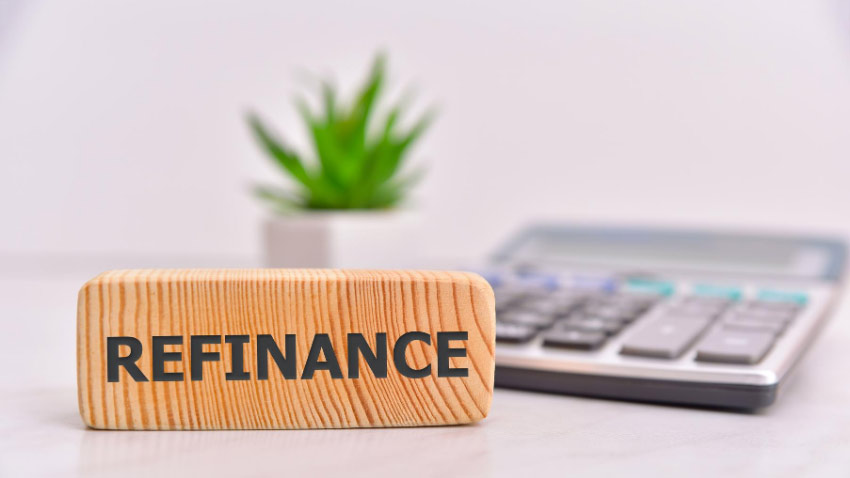
There is no best time to refinance a mortgage but you will know when that time is good for you based on your own circumstances. The best time to refinance a mortgage is when there is a financial need that arises and the amount needed is large enough to warrant a refinance. Or, interest rates have dropped to a level where they are well below one’s current rate and it’s worth it to take a look at how much you can save on your monthly mortgage payment. In the article that follows, we will take a longer look at the factors for consideration for how to know when to refinance a mortgage.
What are my Financial Goals?
The primary reason that should drive any decision to refinance should depend on the goals of the homeowner and what you hope to accomplish with the refinance. Reducing the interest rate is the number one goal of mortgage refinancing’s in the US while lowering the payment on a mortgage is close behind. One should remember with either of these objectives that refinancing doesn’t reduce the principal owed on a mortgage, but you can save on interest paid over the life of the loan if you are able to lower your interest rate and/or shorten the term of your loan.
The ideal goal in refinancing a mortgage is to reduce the interest rate and the monthly payment while also reducing the total interest paid over the new term of the loan. The best way to accomplish this goal is to lower your rate together with shortening the term left to pay on the new loan, or keeping the number of years left to pay unchanged. Extending the term back out to 30 years if you have already paid several years on the loan will generally result in more total interest paid over the life of the loan.
With home values increasing substantially in the past couple of years homeowners now are sitting on millions of dollars in equity in their homes. Many homeowners have decided to tap in to that equity to improve their homes by making home improvements. These refinance loans are called cash out refinance loans and we have an article HERE with everything you need to know about a cash out refinance.
How much does it cost to Refinance a Mortgage?
There is no such thing as a “no cost” loan as all loans have costs associated with them and those costs normally come from the title company and the lender themselves. Some states have attorney costs so closing costs are even higher per loan depending on where you live. Here is Arizona, our loan costs are very competitive compared to other States so if/when interest rates are at a level that meets your requirements homeowners here in the “Valley of the Sun” should take advantage of every available opportunity.
Costs to refinance will also vary by lender and normally will run between $3,500 – $4,000 in most cases. Most borrowers choose to add their refinance costs in to their mortgage so any out-of-pocket costs are minimized. But, don’t let the cost to refinance be your only criteria in choosing a lender. Depending on how solid your mortgage application is, be aware that some lenders have tighter underwriting guidelines than others. Banks and credit unions have the most stringent underwriting guidelines while mortgage bankers are more reasonable. Discuss your refinance options with more than just your local Bank or Credit Union since the cost to refinance doesn’t matter if you can’t get the loan approved.
One other consideration when deciding whether to refinance or not is that normally, for a refinance to make financial sense, you should plan to be in the house for at least enough time to recoup your refinance costs. A homeowner should look at the monthly savings in the payment and the cost to do the refinance while also considering how long you plan to remain in the home.
For example, if you are saving $150 per month by refinancing your loan, and the loan costs are $4,000:
$4,000 / $150 = 27 months
In this example it would take about 27 months to re-coup the costs to refinance so this is the minimum amount of time you will want to remain in the home for this particular refinance scenario to make financial sense. The Federal Reserve has assembled some resources on the benefits of refinancing a mortgage, the costs of a refinance, and refinance calculators that will allow you to input some numbers to see if a refinance is good for you.
Mortgage Refinance: How to handle PMI
Refinancing a mortgage for a lower interest rate or to take cash out are not the only reasons to refinance your mortgage. Many first-time home buyers and those seeking a low down payment took advantage of the FHA loan program to buy a home. The FHA loan program is a great loan program for many reasons, and it has been a popular loan choice especially for those buying their first home.
With that being said, one of the downsides to doing an FHA loan is that the mortgage insurance stays on the loan for the life of the loan. If this a home you plan to remain in for some time and your value has increased significantly, refinancing that FHA loan into a Conventional loan so you can remove the private mortgage insurance (PMI) would be a wise decision for most homeowners.
Depending on your credit at the time of the refinance and your current interest rate, you may be able to take advantage of significant monthly mortgage payment savings by possibly lowering your interest rate together with removing the PMI. Those two together could lower your payment by several hundred dollars per month making a mortgage refinance a wise decision.

Recent Comments